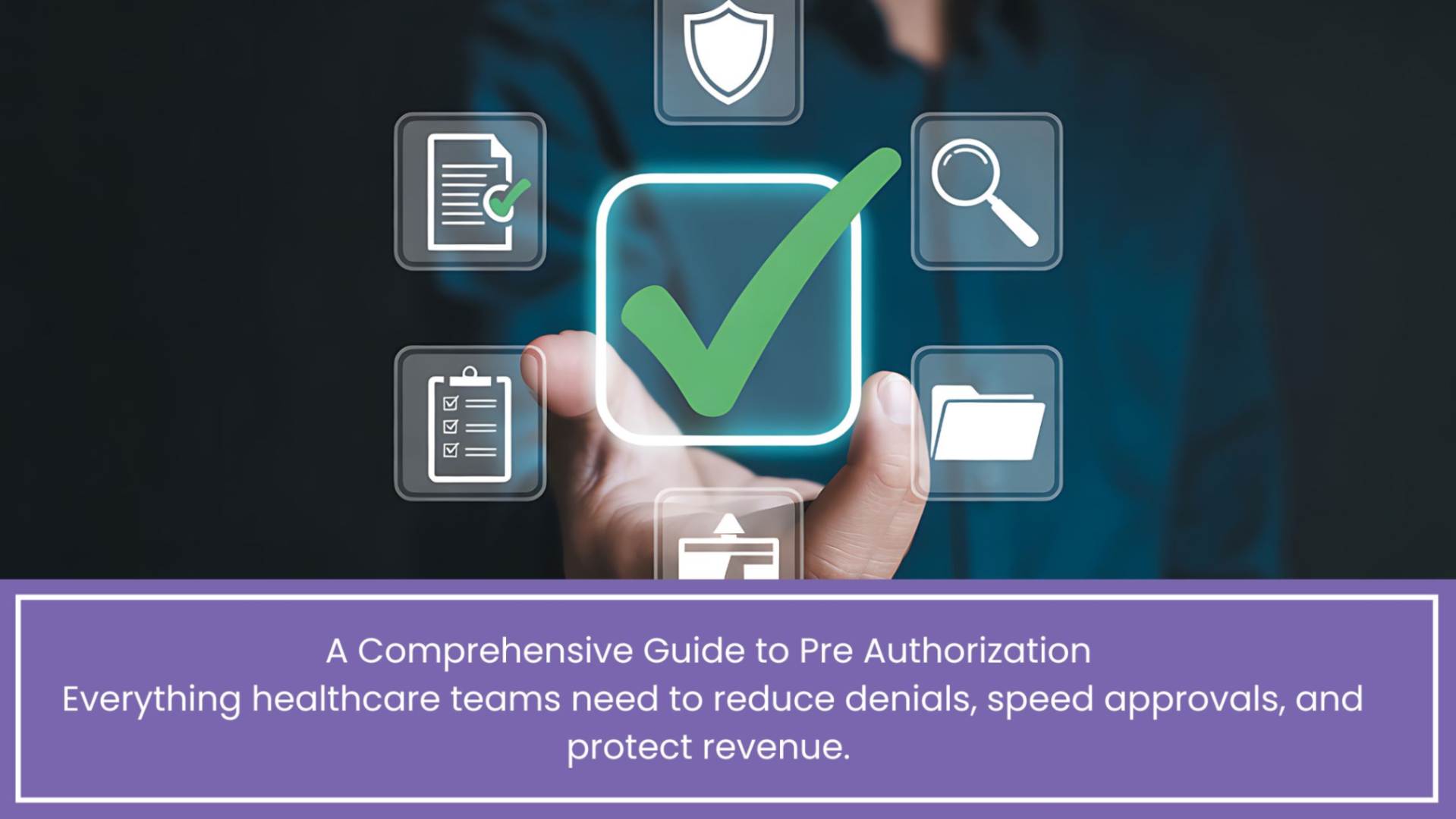Telehealth Billing Trends for Behavioral Health
The rise of telehealth is no longer a trend—it’s a fundamental shift in how healthcare is delivered. Behavioral health practices and surgical follow-up care are at the center of this transformation. For many medical practices, telehealth started as a quick response to COVID-19 restrictions, but it has evolved into a primary care delivery model that patients now expect. In fact, according to a 2023 McKinsey report, telehealth utilization is still 38 times higher than before the pandemic.
But here’s the challenge: while patient adoption of telehealth continues to grow, billing and reimbursement rules are evolving at a dizzying pace. Behavioral health providers, in particular, rely on telehealth to meet increasing demand, while surgeons and specialty practices see it as an efficient way to manage post-operative follow-ups. Both are discovering that billing for telehealth isn’t as straightforward as billing for in-person visits.
This blog takes you deep into emerging telehealth billing trends for behavioral health, payer policies, coding complexities, and the future of telehealth reimbursement—with a special focus on behavioral health and post-operative follow-ups. And toward the end, we’ll discuss why many practices are turning to expert RCM outsourcing partners like Practolytics to stay profitable while delivering care virtually.
Table of Contents
Growing Dependence on Telehealth in Behavioral Health
Behavioral health has always stood apart from other areas of medicine. Unlike specialties that depend on lab tests, imaging, or hands-on procedures, behavioral health is built on connection—conversations, counseling, and structured therapy. That’s why telehealth feels like it was designed for this field.
By 2024, virtual care became the norm rather than the exception, with over 60% of behavioral health visits happening online. Patients embraced the convenience, and payers—from commercial insurers to Medicare and Medicaid—followed by offering broader reimbursement.
But here’s the catch: the rules that make those payments possible haven’t stayed steady. Coding requirements, time-based billing rules, and place-of-service modifiers have shifted repeatedly in just the last couple of years. What worked yesterday might trigger a denial today. For providers, that means navigating a constantly moving target just to get paid for the care they’re already delivering.
For example, when billing for a 45-minute psychotherapy session delivered virtually, the CPT code remains the same (90834), but the modifier and place of service codes differ depending on whether the payer recognizes the provider’s home office as the originating site or requires a facility designation. Miss just one of these nuances, and claims are either delayed or denied.
Now, add the complexity of interstate licensing. Behavioral health providers often see patients across state lines, but billing regulations vary by state. A payer in Texas may reimburse a telehealth therapy session, while the same session in California requires additional telehealth-specific documentation.
Post-Operative Follow-Ups: Telehealth as the New Standard!
Surgeons face an entirely different challenge. Post-op care is critical for patient recovery, but it’s also a logistical burden for both patients and practices. Traveling back to the hospital for a wound check, suture removal, or pain management consultation can be stressful for patients—and costly for practices if appointments are missed.
Telehealth has become the bridge. More than 40% of surgical practices in the U.S. now use telehealth for routine post-op follow-ups. But billing for these services is complicated because of global surgical packages.
When a surgery is performed, payers typically bundle post-op visits into the global fee. That means a video consultation two weeks after knee replacement surgery might not generate separate reimbursement—it’s considered part of the bundled payment.
The only exceptions occur when:
- The follow-up is outside the global period.
- The visit addresses a complication unrelated to the original procedure.
- The payer allows certain telehealth add-on codes to be billed in addition.
This gray area creates enormous variation. One payer may reimburse a post-op telehealth check-in separately, while another won’t. Practices end up juggling payer-specific rules, global fee exceptions, and modifier requirements just to get reimbursed for the same service.
Why Telehealth Creates More Work?
Let’s pause for a second. On the surface, telehealth looks like a simple substitution: same care, different location. But billing professionals know the reality—it’s a minefield of changing codes, evolving payer rules, and new compliance risks.
Here’s a quick comparison that shows just how different behavioral health and post-op follow-ups are when it comes to telehealth billing:
|
Aspect |
Behavioral Health |
Post-Operative Follow-Ups |
|
Volume of Telehealth Use |
Extremely high (60%+ visits via telehealth) |
Moderate but growing (40%+ for follow-ups) |
|
Coding Complexity |
Time-based codes, modifiers, interstate licensing |
Global surgical package rules, bundled payments |
|
Documentation Needs |
Patient consent, state-based compliance, continuity of care |
Medical necessity, complications beyond surgery, payer-specific exceptions |
|
Reimbursement Stability |
More consistent across payers, but shifting rules |
Highly variable depending on payer and procedure |
|
Revenue Risk |
Denials from modifier/telehealth coding errors |
Non-reimbursable visits under global fee bundles |
This table highlights a truth practices already feel every day: telehealth billing is anything but simple.
Complexities Driving the Future of Telehealth Billing
1. Modifier Madness
Every telehealth claim depends on getting modifiers right. For example, many payers require modifier 95 to indicate a service delivered via synchronous telecommunication, while others insist on GT. Then there’s POS (Place of Service) 02 for telehealth delivered outside the patient’s home, versus POS 10 for telehealth in the home. The catch? Some payers still don’t recognize POS 10, even though CMS does.
2. Cross-State Care and Billing Headaches
Behavioral health’s expansion across state lines means providers must track not only licensing laws but also payer contracts that differ dramatically. One insurer may pay for cross-state telehealth therapy, while another denies it outright. For providers near state borders, this creates significant billing headaches.
3. The Rise of Remote Monitoring in Post-Op Care
Post-op telehealth isn’t limited to video calls anymore. Remote patient monitoring (RPM) services is becoming common—tracking vitals, wound healing, or rehabilitation exercises through wearable devices. While RPM codes (like 99453–99458) exist, not every payer reimburses them consistently. Practices adopting RPM must navigate a payer landscape that is still catching up.
4. Hybrid Care and Billing Confusion
Patients may start with a virtual consult and then require an in-person visit within days. Some payers count this as one bundled service; others reimburse separately. Keeping track of overlapping visits, bundled payments, and payer-specific carve-outs has become a full-time job for billing teams.
Financial Impact: What the Numbers Say?
The financial stakes are enormous. A 2023 MGMA survey revealed that nearly 35% of practices lost revenue due to incorrect telehealth billing in the past year. For behavioral health, where margins are already tight, even small denial rates can disrupt cash flow. Surgical practices face similar challenges when post-op telehealth visits fall under bundled fees, leading to lost opportunities for reimbursement.
When we compare traditional in-person billing to telehealth billing, the denial rates are significantly higher for virtual care—12–15% on average, versus 6–8% for in-person visits. That means practices not only face higher administrative costs but also slower revenue cycles.
Why Outsourcing Telehealth Billing Makes Sense?
Let’s face it—telehealth billing isn’t simple anymore. What used to be a straightforward process has turned into a maze of payer-specific rules, shifting modifiers, bundled surgical packages, and compliance demands that seem to change every few months. Behavioral health providers struggle with coding across state lines. Surgeons find themselves trapped in global surgical package rules where post-op virtual visits don’t always get reimbursed. Even practices with strong billing teams end up chasing denials, rewriting claims, or losing revenue simply because the rules weren’t applied exactly the way a payer wanted.
So, the big question is this: should practices really be handling telehealth billing in-house?
For many, the answer is increasingly clear—no.
Telehealth has expanded so rapidly that most practices can’t keep up with the administrative side without sacrificing patient time. Staff who should be focused on care coordination or patient experience are stuck double-checking modifiers, updating place-of-service codes, or appealing claims that were denied for reasons that barely make sense. The result? Delayed payments, lost revenue, and an unnecessary drain on already stretched teams.
That’s why more providers are turning to specialized revenue cycle management partners. Outsourcing doesn’t just free up staff hours; it puts highly trained experts on your side—people who live and breathe payer rules, know how to code telehealth correctly the first time, and track every claim until it gets reimbursed.
And this is exactly where Practolytics comes in.
With more than 20 years of experience in revenue cycle management and a presence in 31 states, Practolytics isn’t just a billing company—we’re a partner that helps practices thrive in a world where telehealth is no longer the exception but the norm. Our team processes over 5 million claims every year for more than 1,400 providers, all under strict 100% HIPAA compliance.
What really makes us different is how deeply we understand the twists and turns of telehealth billing. Every claim has its own story, and the details matter. Maybe it’s a behavioral health session that needs the right modifier attached. Or a post-op telehealth visit that falls into that gray zone of being inside—or just outside—the global period. Or perhaps it’s remote monitoring codes that many payers still treat differently. These are the little things that often cause big headaches for practices. At Practolytics, we don’t let those details slip through the cracks. We make sure every claim is coded correctly, every requirement is met, and every payer rule is accounted for. That’s how we help practices avoid denials, get paid faster, and keep their revenue cycle running smoothly.
But more importantly, outsourcing medical billing to Practolytics means giving your practice the freedom to focus where it truly matters—on patients. In an era where telehealth is only going to expand, providers need a partner who can anticipate payer shifts before they happen. That’s what we do: help practices stay ahead, stay compliant, and stay financially healthy.
Because at the end of the day, billing should never be the reason a practice struggles. Care should always come first. And with Practolytics managing the financial side of telehealth, providers can spend less time untangling paperwork and more time delivering the care patients deserve—even if that care happens through a screen.
Talk to Medical Billing Expert Today — Get a Free Demo Now!






